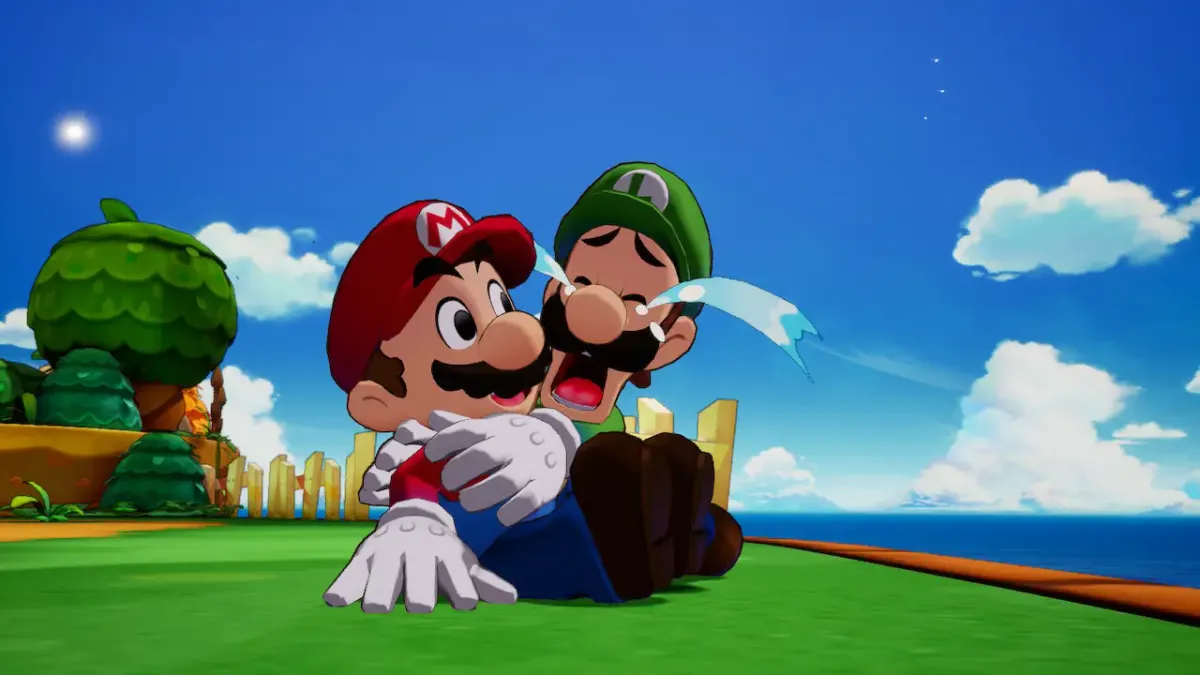
The fate of the Mario & Luigi series was uncertain for quite a while after the closure of developer Alpha Dream in 2019. Much like the Paper Mario series, I enjoyed the first three titles to varying degrees, then felt they became boring and more of a formality than anything, never finishing Dream Team or even picking up Paper Jam. Even so, I was ecstatic to see the announcement of Mario & Luigi: Brothership. The loss of the talented team at Alpha Dream still stung, but seeing another group take a shot at this particular brand of Mario RPG was exciting, especially in the same year as the Thousand Year Door remake. So, do the brothers still have it? Or has that ship sailed?
The answer is… somewhere in the middle. Brothership has some very low lows but also some very high highs. While the former unfortunately outweigh the latter, there’s still a good amount to like about the game, particularly the visuals and sound. Brothership’s artstyle is amazing, with bright colors and using gradients for a nice shading effect. The opening and ending pre-rendered cutscenes are a treat to witness, though the in-game visuals are no slouch either. The animations of cutscenes and attacks are all very fluid and cartoony, which gives the characters a lot of life.
You’ll constantly meet new characters with their own quirks and personalities. In the land of Concordia, the Extension Corps are working with the evil Zokket to cover the land in Glohm, a substance that drives people away from each other. (Yes, the game is filled with electronics puns.) Characters, new and old, are extremely expressive and unique. Even Bowser, he’s as large as ever and has a lot of the same poses from Bowser’s Inside Story. Every character model, even the somewhat same-y Concordians, are made with a lot of love and have tons of different designs, styles, and even voice samples. From the IDLE Group to the Groovemaster, every character you meet during the main story gets a unique tale to tell for each major island you visit throughout the game on the bros quest to save Concordia.
The Banjo-Kazooie-like voices from The Thousand Year Door Remake return here with their own twist. Almost every NPC and character has unique sounds accompanying each syllable. You’d think it’d get annoying over the course of the overly long journey but it’s never overbearing as it’s complimented by more bespoke “voice clips” to emphasize certain emotions while you read dialogue.That being said, Mario and Luigi themselves are chattier than ever with vaguely Italian gibberish. While individual dialogue sounds aren’t too bad, you will be hearing the same exact clips of Mario and Luigi saying each other’s names constantly. It gets annoying hearing the exact same “Ma-rio!” or “Lu-IGI!” sound clip every few seconds or minutes. Cutscene? Lu-IGI! Hammer attack? Ma-rio! Get slightly far away from Luigi? Let’s pause the game, force you to walk backwards towards Luigi, and Ma-rio! It gets old extremely fast.
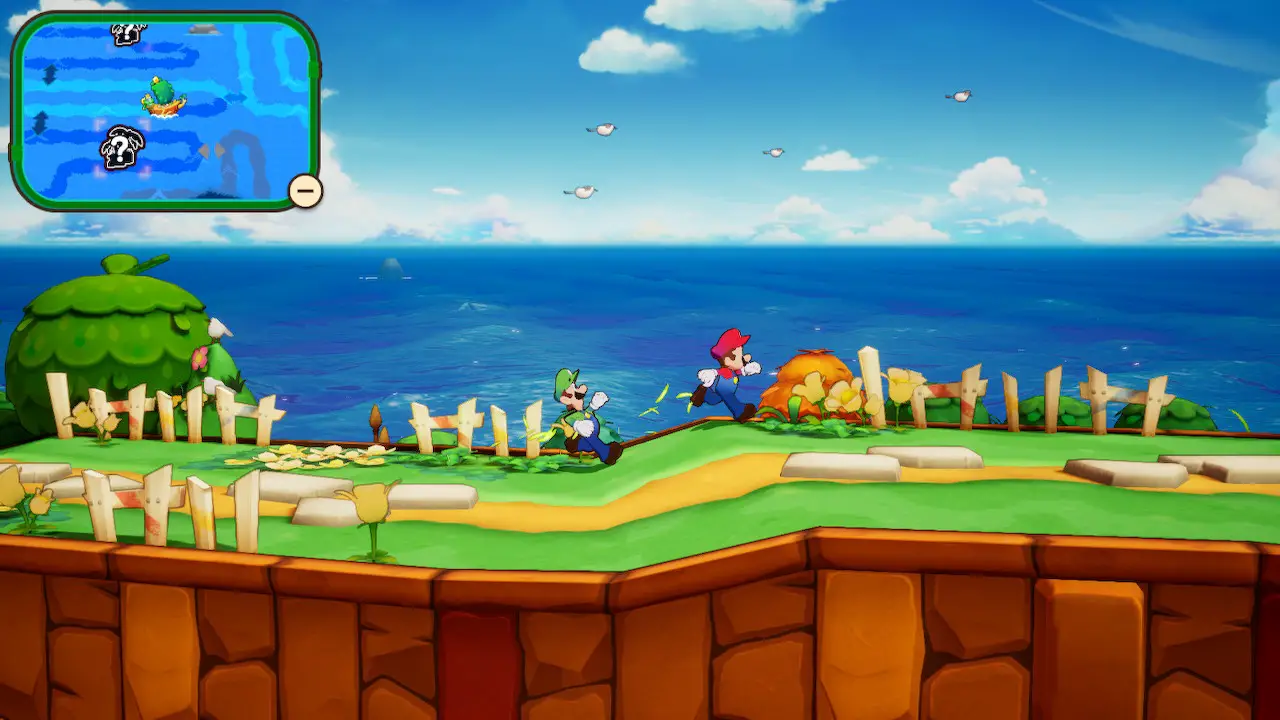
That last bit, automatically forcing Mario to make a b-line towards Luigi if they get far enough away from each other, is especially frustrating. Unlike previous games in the series, Luigi is mostly controlled by AI here – less Superstar Saga and more like partners in the Paper Mario series. That might sound convenient, but it makes the game significantly less compelling gameplay wise and much more frustrating since Luigi isn’t exactly the sharpest knife in the drawer. He’ll occasionally miss some very easy jumps (which can force you to redo entire platforming sections as Mario will walk off of cliffs after him), get stuck on absolutely nothing, and generally be the kind of character Dream Team and Paper Jam portrayed him as. Some puzzles in the game entirely revolve around Luigi’s AI, like needing to step on numbered panels in order before Luigi screws it up or even rotating see-saws because the green bro won’t move a few feet to the left.
The best and worst of this is in Luigi Logic. At certain points when exploring the overworld, Luigi will glow with a green aura, and pressing the L button will have him perform an automated task like breaking crates, standing somewhere to hammer a switch, or even entirely unique actions like squeezing through a fence with his less portly frame. The convenience of not having to pull up every plant for some coins manually is nice, but it also devolves some puzzles into just pressing L. It makes things smoother, sure, but removes the interesting friction that was what separated the Mario & Luigi series from other RPGs. There’s some unique charm to seeing the two bros “working together” to solve puzzles but it almost feels like this game was almost intended to have a co-op mode instead of Luigi being used almost like some kind of tool or work mule.

This is part of the bigger problem with Brothership, it feels like a generic RPG with a Mario skin on top rather than a Mario RPG. Outside of the impeccable visuals and pretty catchy music, you’re using the power of friendship and love to defeat foes across a world that really starts to blend together after a bit. The main story is nothing to write home about, even if some characters are charming. You’re constantly connecting islands to the main ship as you sail across the seas but like Tears of the Kingdom’s first few dungeons, it’s always the same cutscene with a slight twist. Luckily, some great combat can carry otherwise mediocre games, right?
Brothership’s battle system is, initially, very promising. Normal jump and hammer attacks have been reworked into something akin to Bros. Attacks from Superstar Saga. For example, if you jump on an enemy with Mario, you’ll then need to press B to have Luigi launch his big bro back at their foe, then A one more time for the final hit. It’s a neat idea that makes normal attacks a bit more involved, but comes with the consequence of making battles last a whole lot longer than they should.
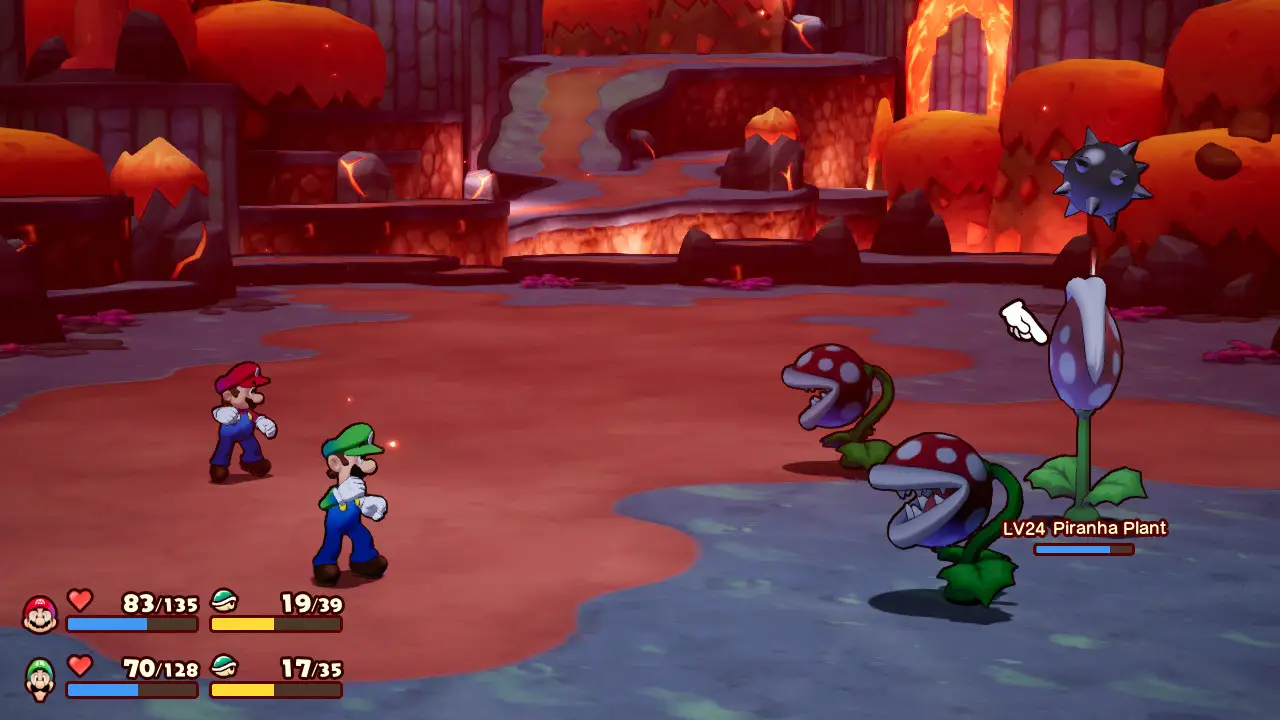
These attack animations, gorgeous as they are, do take a while to resolve. You might not think so at first, but the lengths of these animations add up over the course of a playthrough. Alongside the few seconds of loading that begin and end each battle, and combat becomes more of a chore than a treat. There were even times where I had initiated two battles in a row and was disoriented when I returned to the overworld because I spent the last 10 minutes slowly fighting enemies instead of being able to focus on the puzzle or task at hand. You’d think that could be sped up with the Bros Attacks but you’ll still be spending a lot more time playing the same three or four minigames for decent damage than you will making progress. The Bros. Attacks themselves are also doled out excruciatingly slowly over the course of the journey, with the final two (of 10) only coming into play in the final few hours.
Brothership does try to add a bit more strategy to battles through Battle Plugs. By collecting Sprite Bulbs, you can craft new Battle Plugs with various effects like giving normal attacks splash damage, automatically using Mushrooms when low on HP, and many more. You can equip any combination of Battle Plugs, with two additional slots opened as the story progresses, where they will take effect when appropriate and thus lose charge. Once a plug is out of charges, it’s removed from your deck and needs a certain amount of turns to recharge, often far too many. It’s made slightly better with an equippable accessory that halves the recharge time, but it barely helps when it still takes one plug up to 15+ turns to recharge.
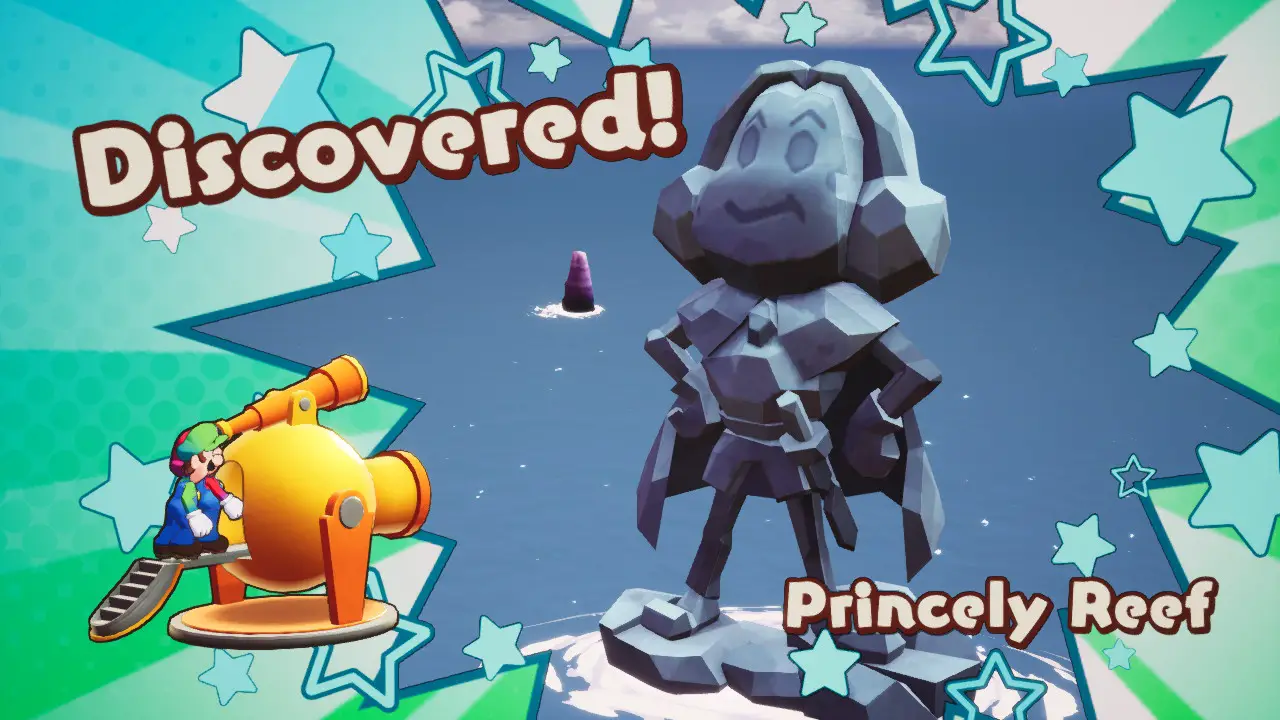
This should keep even normal encounters diverse and engaging, and sometimes it does, but most of the time you just pick the same few attack plugs and go to town. For example, on bosses I would basically only ever use the Auto-Excelent, Surprise Iron Ball, Bros. Attack Damage Up and BP Return, and critical plugs for massive free damage on Bros. Attacks. I didn’t bother learning how to perform those few final Bros. moves because I could just get the Auto-Excellent plug to do it perfectly for me every time.
That’s not to say the game lacks any challenge, I actually did die a few times throughout the adventure, mostly due to not being able to properly react to enemy attacks. Being able to dodge or even counter most attacks is a big part of the series’ appeal, and there are quite a few wholly unique attacks to figure out. Unfortunately as you reach the end of the game, some attacks from normal enemies start to last far too long, with a pittance of damage resulting from the counter attack.
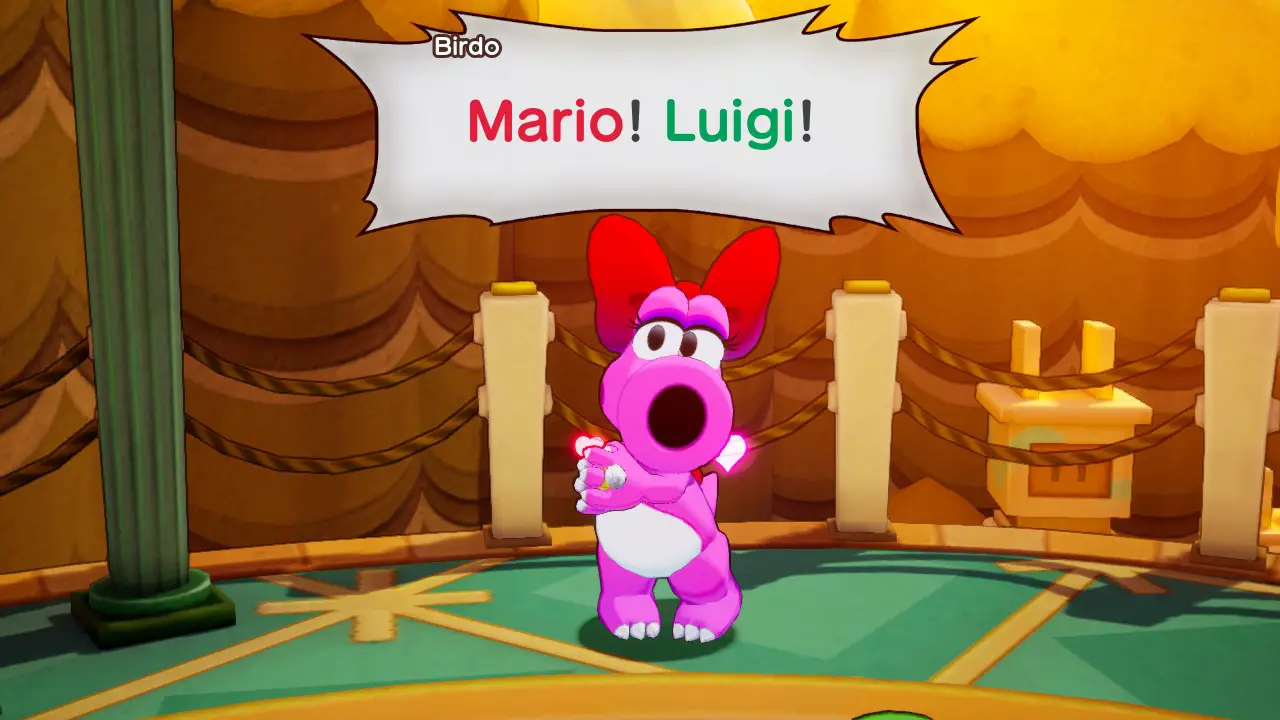
All this is to say that Mario & Luigi: Brothership is way too long for its own good. I think there’s about ten to fifteen hours of great game here, but my final time clocked in at about 30 after resolving to skip side quests about halfway through. Doing those side quests, especially those that expire at certain points in the story, can easily bring that time way up, about 55 hours to 100% the game by collecting every Sprite Bulb and finishing every side quest as they appear. A lot of the islands you visit in the game feel too similar, with a plethora of dialogue to describe and progress very simple conflicts, and the main story feels like it moves the goal post multiple times before finally rolling credits. There are still bright spots in between all that padding, like the opening hours, certain bosses, and the visual gags that utilize the camera in fun ways, but you have to put up with a terrible dancing minigame, a bland story, and a whole lot of wasted time to get to them.
Mario & Luigi: Brothership
All Right
Mario & Luigi Brothership is definitely ambitious, but the structure of the game is not well suited to the sluggish feeling everything has. Despite being about half the length of some other modern RPGs, it doesn’t have the depth to match. A few good gags and some touching character moments doesn’t make the entire experience fulfilling. What’s here is solid enough but it’s death by a thousand cuts. Every cool or fascinating thing has some kind of asterisk to go with it. Battles are fun but they take forever to finish, characters are unique but dialogue is often belabored, Battle Plugs are interesting but take way too long to recharge. There’s a lot to like here, but just as many things if not more to dislike, leaving the game okay but frustrating.
Pros
- Good visual humor
- Awesome artstyle
- Well animated
Cons
- Sluggish pacing
- Tutorial heavy dialogue
- Constant story goal post shifting
- Luigi is just there
